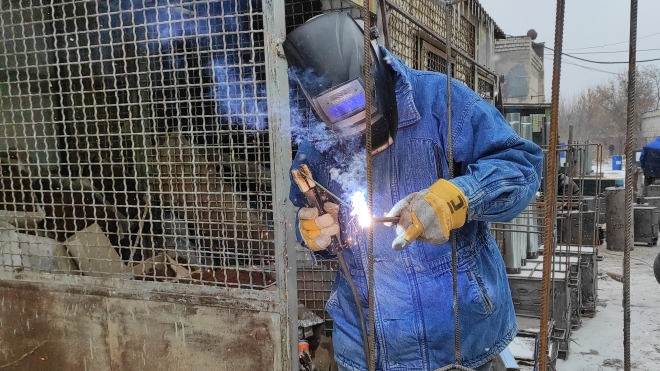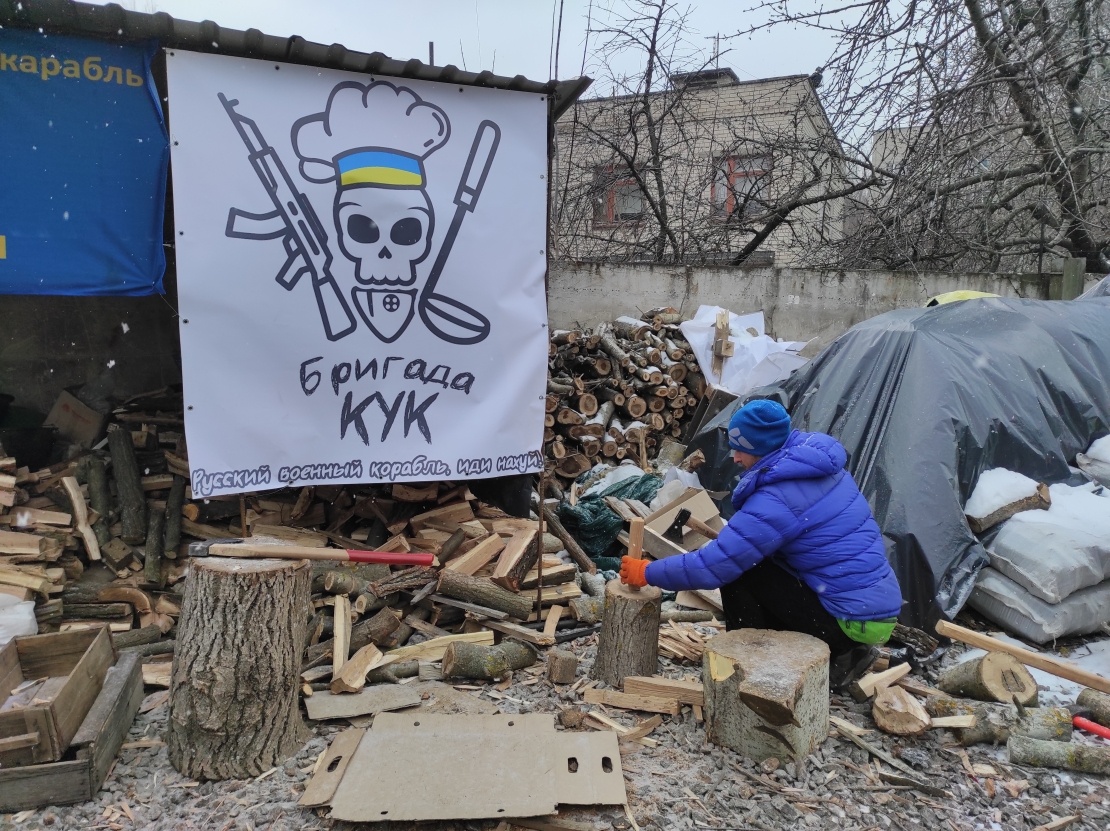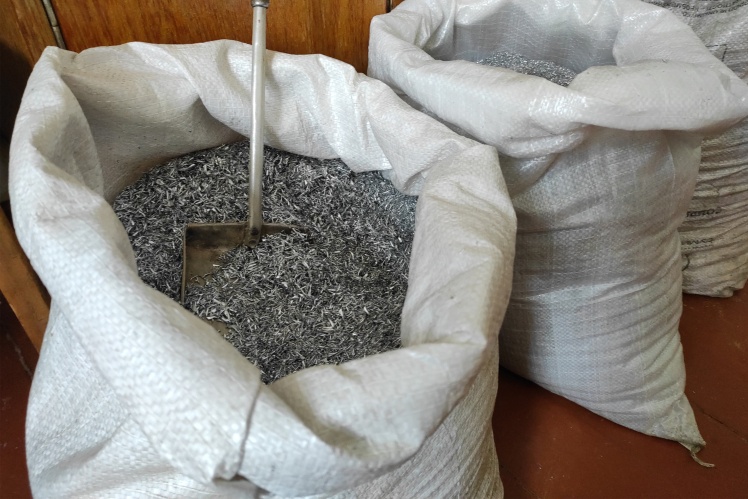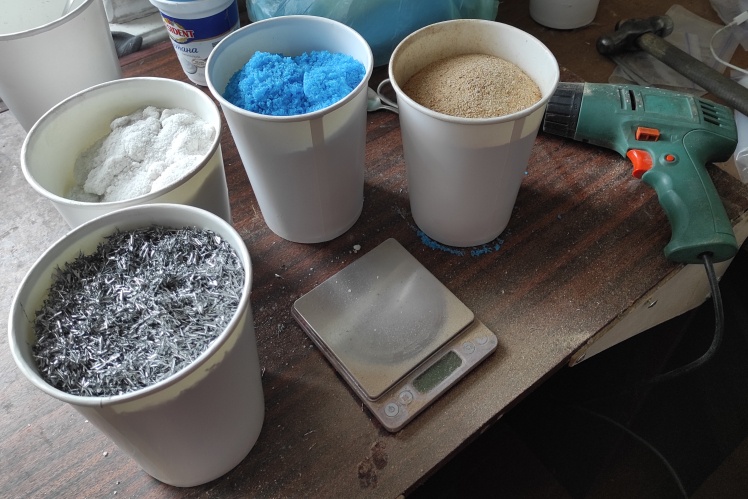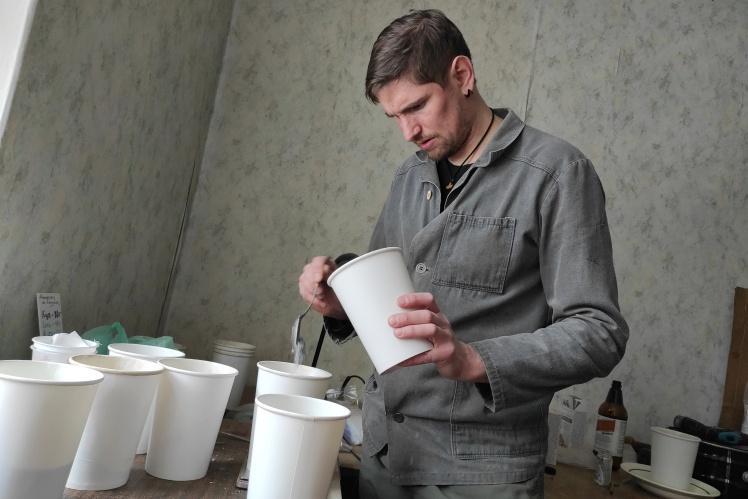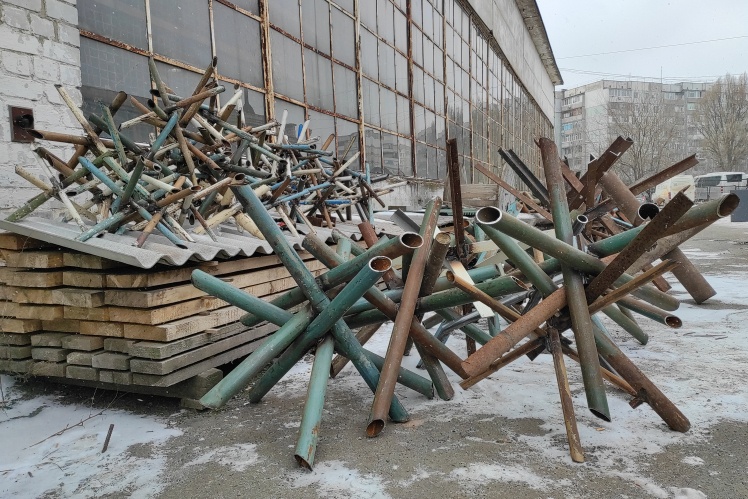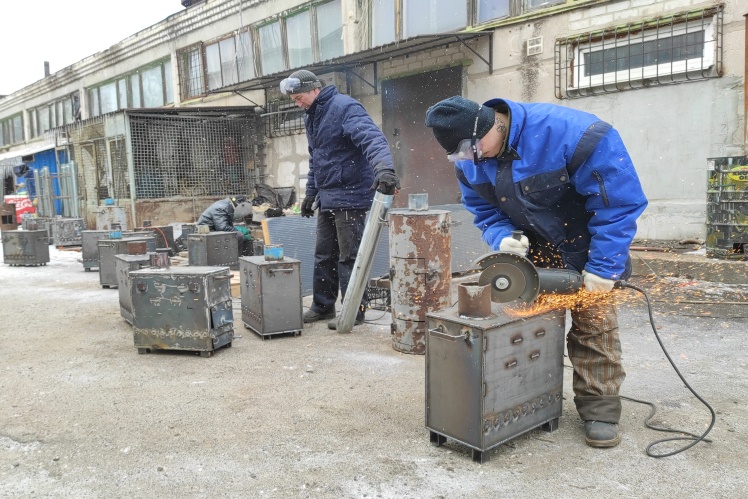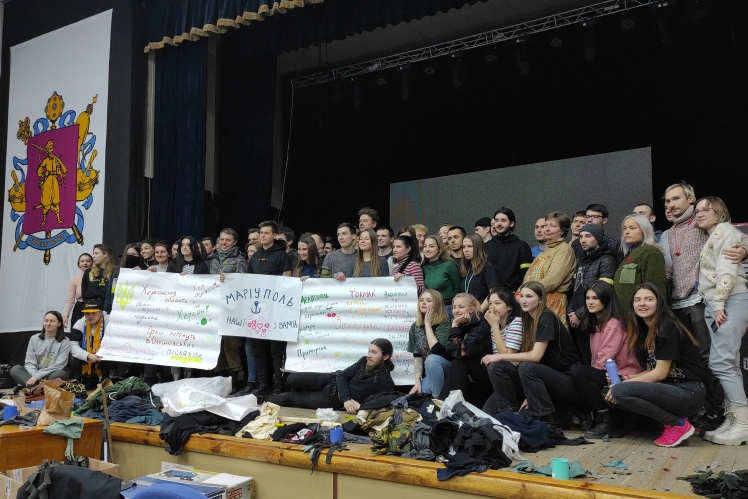"Tanechka" field kitchen and body armor manufacture
The Zaporizhzhia volunteers association "Palianytsia" is a new aid movement that appeared at the beginning of the war. A local businessman Vasily Busharov gave the ideological push to it. In peacetime, he organized a lot of cultural activities in the city — including literature evenings and open-air movies screenings. Now his volunteer association has several departments in the city. At the entrance to one of the departments, the stern men in military uniforms ask for a password, which changes every day.
We find out the password, name it, and now we are allowed to enter the territory. A large industrial site with hangars is hiding behind the iron gates. The place once was a house furniture factory. The association is engaged in many directions, including the production of potbelly stoves and anti-tank hedgehogs, military tailoring, collecting humanitarian aid, cooking, and much more.
We dive a little deeper into the hangars and see a field kitchen with the chef named Oleksiy. While making jokes, he pours fragrant pea soup on the plates.
— On average, we cook for 560-650 people daily, — says Oleksiy. We feed the volunteers who work here, the territorial defense units, we feed the checkpointsʼ staff, the police workers, the National guards. And when there is any food left, we give it to the elderly who are staying at home.
Oleksiy says the menu is diverse. It includes the first courses (borshch, solyanka) and the second courses (porridge, pilaf). The cooks are composing the menu on available products and are trying to make sure dishes include meat, chicken stock, or fried base so the food is not tasteless.
In the peacetime, Oleksiy worked as an instructor of mountain hiking. He devoted 20 years of his life to this cause, leaving his cooking college degree without use.
Thick steam pours from the field kitchen marked with the "Tanechka" sign.
Orcs are there now. And on March 8, the "Phaeton Museum" drove this beauty to me. I never thought I would cook on this thing. And since March 8, her name is Tanechka, as, during the Second World War, soldiers called their tanks after their girls. For me now the tank is a field kitchen and her name is Tanechka, in honor of my wife.
There are welders working at the enterprise itself. People work inside and outdoors, making stoves and anti-tank "hedgehogs". Metal blanks for body armor plates are passed by. The bulletproof vests themselves are also being developed here.
— Everything we do here is for the first time for me — says Olena, who in a peaceful life is a designer and owner of a studio in Zaporizhzhia. — There was a need to transform a regular tactical vest into a tactical vest with pockets for two magazines. We made it and the vest was [succesfuly] tested. The next task is to make a design and replicate the tested bulletproof vest together with tactical pockets. Here it is ready, we made one item yesterday. It also passed the test.
Chemical heaters and experiments
Another large volunteer association in Zaporizhia names itself "Whatʼs up, man?" and is engaged in experiments. In particular, they produce chemical heaters. For example, one can put them in a pocket to keep the hands warm.
At the "laboratory" we are met by a guy named Anton, who invites us inside. There are bags with metal shavings, sawdust, packs of salt, syringes, zip-bags, small table scales.
— After adding 10 mg of water to the sack, the temperature reaches 50 degrees, — explains Anton. — If you pour twice as much water, the reaction will go faster, the temperature will reach about 80 degrees, but the duration of the reaction will decrease.
Several holes are specially made in the sacks so the hydrogen that is released during the chemical reaction has an exit.
Hereʼs the recipe:
Copper sulfate (dry) — 80 g
Salt-40g
Aluminum shavings (dry) — 20 g
Wood sawdust — 100 g
Typical mulch that remains after [wood] production will not work. The recipe requires wood dust, which is often simply thrown away because itʼs of no use. Therefore, it is difficult to find this ingredient. However, the guys are already thinking about how to process mulch into dust.
Anton says that this is not their main activity and they spend several hours a day working on it. However, in three days the gang volunteer has already made 300 such warming sacks:
- We give the boxes to the military in addition to something else. We provide guidance, but as a result people often call back and ask how it works. So we are now thinking about the development of the [printed] guidelines.
Volunteers report there are already positive reviews — the sacks are working. Not quite as expected in the "laboratory", but the function of heating is achieved.
Words of support for the occupied cities
The next stop is the Volunteer Headquarters of Zaporizhia. There, the CSOs (members of the Association of Public Organizations of Zaporizhia) gathered for a flash mob "Words of support for the occupied cities". At the entrance to the headquarters, there is a Russian flag instead of a doormat.
The headquarters is holding a flash mob in support of cities that are temporarily occupied by Russia. After working for several hours, we give away three posters: Zaporizhzhia oblast with words of support for the occupied cities, Kherson oblast, and separately Mariupol, which has been suffering from shellings and blockade by Russian troops for the second week.
We take a joint photo with volunteers, attach the posters to the wall. Now it is time for the information campaign. Residents of the occupied cities should know that no one has forgotten anyone.
The headquarters gathers humanitarian aid and cooperates with Zaporizhzhia social security facility, feeds the military, and weaves the [masking] nets. Oksana, one of the organizers of the process, in peacetime a marketer in an IT company, says that they are also going to make canned stew.
— Weʼve been given two boxes of meat, and making broth or soup on meat is great, but what should we do with whatʼs left? Secondly, the most important question is that itʼs not possible to send a lot of meat to checkpoints or anywhere else. If there is a field kitchen, thatʼs okay. Therefore, the canned stew is the best option so that the meat does not spoil and is eaten.
The test batch clustered of 11 cans, and now volunteers are actively searching for the autoclave to upgrade the experiment into production.
Our publication relies on readersʼ donations. Please support Babel now !
